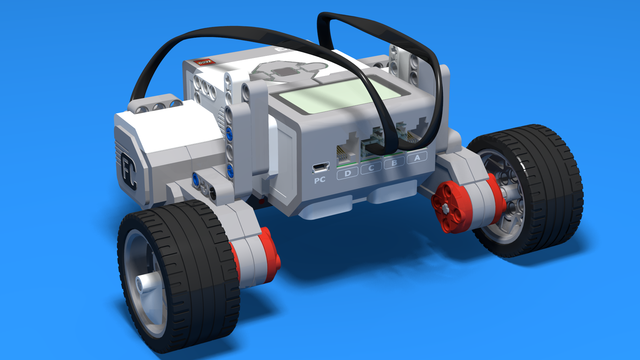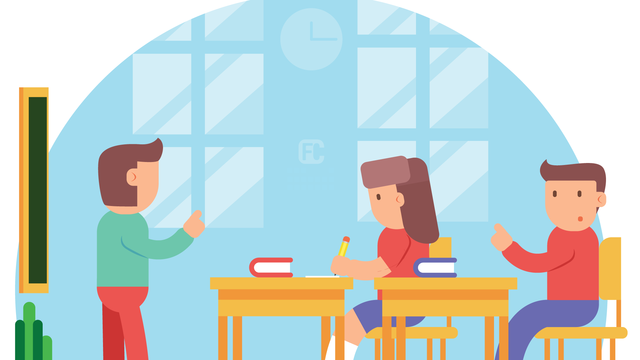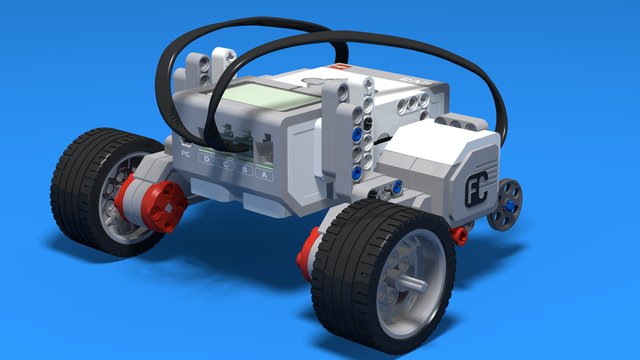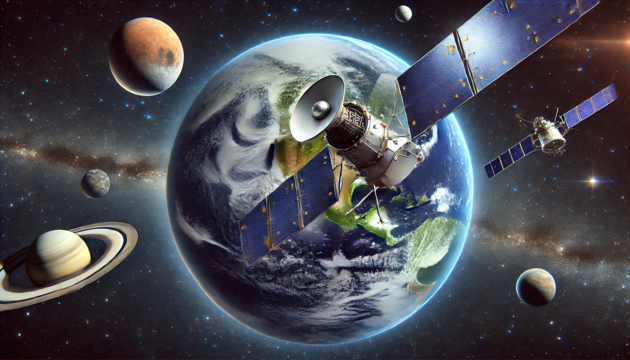
To access the full video please subscribe to FLLCasts.com
- #860
- 01 May 2018
Let’s play a game:
The teacher will tell you the name of a LEGO part, and you will have to take it from the set and show it to the teacher. When all students have shown the correct part, you can move to the next one.
Let’s start. Show me:
- short pin
- triple pin
- pin with cross hole
- axle (x6 LEGO units)
- axle (x5 LEGO units)
- axle pin
- gearwheel
- bush
- half bush
- beam 7
- large L beam
- small L beam
- angular beam (there are three types of angular beams)
- T-shaped beam
- beam frame
- tire
- rim
- wheel (the tire and the rim together make the wheel)
- "Н"-beam with pins;
- angular beam with pins
Courses and lessons with this Tutorial
This Tutorial is used in the following courses and lessons

Robotics with LEGO - Level 1.0 - Adventure in Space
The first level of the Robotics with LEGO curriculum for students in fifth to twelfth grades.
Various constructions with robots are built. Learn how to control the motors so that the robot navigates around the Moon and Earth in various ways. Getting to know the first two sensors. The robot can feel its surroundings with the help of the Touch sensor and avoid obstacles.
The Ultrasonic distance sensor can help the robot avoid obstacles. Students work with concepts like loop, degrees and medium motor. Robots can now do two different actions at the same time - while solving missions on a field, the third motor clears detected obstacles.
- 126
- 123:52
- 150

Revision of the parts' names and their place in the box
We will cover the names and the basic usage of the parts in our typical robot.
- 3
- 0
- 0
- 3d_rotation 0

Level A1. Introduction. Robotics with LEGO
Introduction to robotics - The first level of the Robotics with LEGO curriculum for students in second, third or fourth grades. A journey in space, with robots. Various constructions with robots are built. Learn how to control the motors so that the robot navigates around the Sun, the Moon and Earth in various ways. Getting to know the first of the sensors. The robot can feel its surroundings with the help of the Touch sensor and avoid obstacles.
- 142
- 133:42
- 187

Lesson 2 - Yo-yo challenge
Introduction
Today we will learn to program the robot to perform more than just one action, as well as program it to move like a yo-yo. Have you ever played with a yo-yo? How does it move? Did you know that from Filipino yo-yo means "to return".

- 18
- 3
- 8
- 3d_rotation 1

Level A1 - Space Adventure - Robotics with LEGO SPIKE Prime
This is the first level of the LEGO Robotics Curriculum for second, third, and fourth-grade students.
A "space adventure" but with robots. Different robot structures are built in Level A1. The motors are controlled so that the robots perform precise movements around the "Earth", "Moon" and "Sun". We use the force sensor to overcome various obstacles we bump into. We learn interesting facts about the solar system and space vehicles.
- 65
- 30:30
- 76

Lesson 2 - Tidal waves
Introduction
Today, we will focus on an interesting effect caused by the Moon: tidal waves.
You may know that massive bodies have an attractive force - gravity. The Moon's gravity pulls the water in the oceans, which causes the sea level along the ocean coasts to temporarily rise or fall. The increased level is called high tide, and the decreased level is called low tide.
How much, do you think, can the difference between high and low tide be in the world?

The distance between high tide and low tide sea levels can reach up to 16 meters in the Bay of Fundy in Canada, and the lowest differences are in the Mediterranean, Baltic, and Black Seas, where they are only a few centimeters. We will use 50 cm as an average value as it is convenient for the task.
- 10
- 5
- 12
- 3d_rotation 1